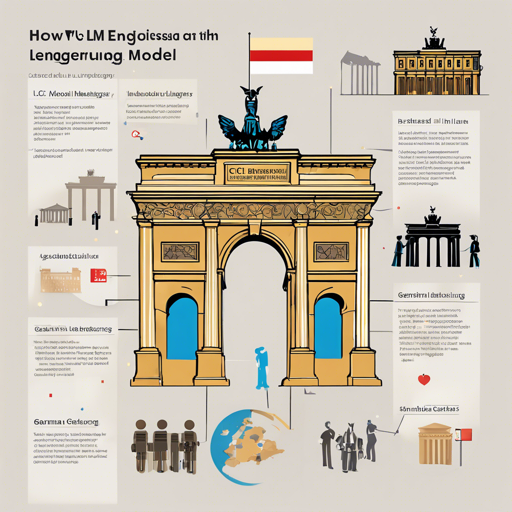Welcome to the world of natural language processing, where we delve into the intricacies of language models designed for specific languages. Today, we are focusing on GC4LM, a colossal language model specifically tailored for the German language. This guide will walk you through the essential steps to understand, utilize, and address potential challenges with this model.
Understanding GC4LM
GC4LM is built on the German colossal, clean Common Crawl corpus (GC4), which contains approximately 844GB of text data crawled from the internet. However, it’s important to note the disclaimer that this model is intended for research purposes only. Here’s a deeper look at the various facets of this model:
- Size and Scope: The model is colossal in size, leveraging vast amounts of textual data to understand and generate German language patterns.
- Bias Awareness: It captures cultural biases prevalent in the training data, making it crucial for researchers to be mindful of these biases, which can perpetuate stereotypes related to gender, race, ethnicity, and disability.
- Research Focus: The model aims to promote research on identifying and preventing biases in large pre-trained language models, especially for languages other than English.
How to Use GC4LM
To start using the GC4LM language model, follow these core steps:
- Visit the GC4LM GitHub Repository, where you will find the necessary resources.
- Clone the repository to your local machine using the command:
git clone https://github.com/german-nlp-group/gc4lm.git - Ensure you have the necessary Python dependencies installed. This typically includes libraries like TensorFlow or PyTorch.
- Load the language model and start generating or analyzing text data as per your research requirements.
- Participate in discussions about your findings using GitHub Discussions or share on Twitter with the tag #gc4lm.
Explaining the Code: The Bakery Analogy
Imagine a bakery that specializes in creating a wide variety of pastries using a large batch of dough. This bakery represents the GC4LM, which is cultivated from diverse ingredients (texts from various sources) to bake different types of pastries (language outputs). However, because the raw dough contains flavors influenced by specific types of ingredients (biases from societal norms), the pastries will likely carry those flavors—sometimes desirable, other times not.
Each step in the baking process equates to different functions within the code—from preparing the dough (gathering data) to baking (training the model) and finally, presenting the pastries to the customers (using the outputs). As researchers, it’s essential to taste and critique each pastry (outputs) to identify any outlandish flavors (biases) that might negatively impact the overall quality.
Troubleshooting Common Issues
While working with the GC4LM, you may encounter several challenges. Here are some troubleshooting steps to consider:
- Issue: Model not loading correctly
Ensure that all dependencies are installed and that the model files are properly downloaded. Check your Python version compatibility.
- Issue: Unexpected outputs
If the model generates biased or unexpected outputs, review your input prompts to ensure they are neutral and unbiased.
- Issue: Performance lag
Consider increasing your system’s memory or using cloud computing resources to enhance performance.
For more insights, updates, or to collaborate on AI development projects, stay connected with fxis.ai.
Conclusion
At fxis.ai, we believe that such advancements are crucial for the future of AI, as they enable more comprehensive and effective solutions. Our team is continually exploring new methodologies to push the envelope in artificial intelligence, ensuring that our clients benefit from the latest technological innovations.

